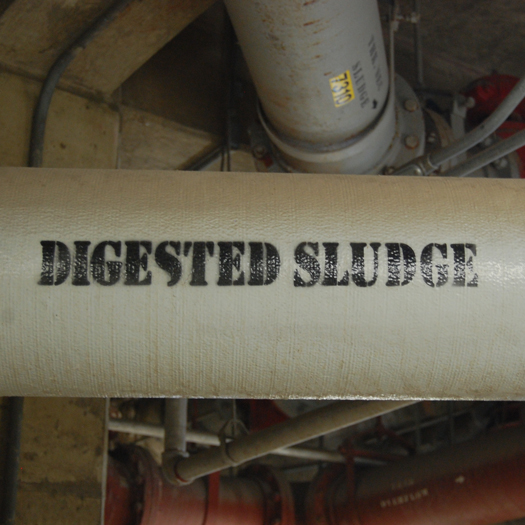
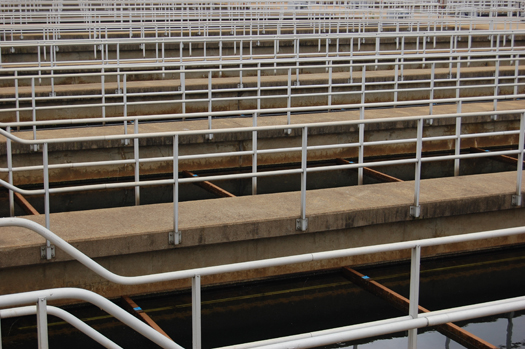
Last spring, Mammoth visited the Blue Plains Wastewater Treatment Plant. This massive facility — which claims to be the largest plant of its particular kind in the world — exists to remove the solids that the 2 million residents of Washington, D.C. and surrounding counties in Maryland and Virginia introduce into wastewater from their parking lots, their laundry, and their toilets.
Blue Plains creates clean water by refining influent, removing particles of ever-decreasing physical scale. It separates true waste components from useful nutrients from clean water. Facilities like Blue Plains — not just sewer and wastewater treatment, but garbage dumps, power plants, distribution centers, ports, and a thousand others — are both massive and critical to the function of cities, yet often have minimal visibility. This lack of visibility can be intensely problematic, particularly in a democratic society, because it distances the public both from the utility of infrastructural facilities — which often translates into neglect and a lack of will to develop and execute long-term vision — and from any problems those facilities might create through their operation — again, resulting in a failure to improve or re-think those infrastructures.
A key theme in the contemporary operation of many infrastructural facilities, and of Blue Plains in particular, which deserves this visibility is a growing shift from linear processes (extraction, use, disposal) toward cyclical processes (use, extraction, re-use). In an article called “Landscapes of Disassembly” in Topos 60, Pierre Belanger describes this transition:
“Though the economic and ecological histories of Europe, Asia and North America may differ, they all present compelling examples for understanding the latent reciprocity between industry, waste and urbanism. As a result of global legislation – such as the 1992 Basel Convention that prohibited the transnational movement of hazardous wastes – the pre-eminence of waste colonialismin the 20th century is now a thing of the past. Multilateral strategies, including waste diversion, separation, recycling, composting and remanufacturing, are proving effective as durable alternatives to conventional systems of waste management that previously relied on consolidated forms of disposal. With skyrocketing costs of mining, surging fuel prices and growing patterns of urbanization, exhausted economies are being jumpstarted through combined strategies of economic regeneration and ecological reclamation, where water, land, energy and waste are becoming the bedrock of a new world economy. Dismantling the Old World notion of the city, urban-industrial synergies never before possible are forming beyond metropolitan areas, signaling the birth of a new and diffused urban economic pattern that is best described as an operational ecology held together by supply chains and distribution networks.”
1Scott Huler explains this in his fascinating On the Grid, quoting a Raleigh wastewater treatment superintendent T.J. Lynch:
“All we’re doing is what a river would do… what happens in our plant is the exact same thing that happens in a stream. That’s exactly where the process came from. We’ve just concentrated it. It might take the river a couple hundred miles to accomplish what we’d do in a couple days.”
While it’s obvious that a treatment plant handles water in this fashion (indeed, the reason plants like this were first developed was to combat the severe pollution of waterways where waste water was disposed, and the process of waste water treatment mimics — in an accelerated fashion — the natural cleaning processes of waterbodies1), this isn’t the only cycle Blue Plains engages. Take, for instance, this excerpt from a Foreign Policy essay about peak phosphorous, followed by two quotes from our tour guide:
“From Kansas to China’s Sichuan province, farmers treat their fields with phosphorus-rich fertilizer to increase the yield of their crops. What happens next, however, receives relatively little attention. Large amounts of this resource are lost from farm fields, through soil erosion and runoff, and down swirling toilets, through our urine and feces. Although seemingly mundane, this process cannot continue indefinitely. Our dwindling supply of phosphorus, a primary component underlying the growth of global agricultural production, threatens to disrupt food security across the planet during the coming century. This is the gravest natural resource shortage you’ve never heard of.”
‘In 30 years, OPEC will stand for Organization of Phosphorous Exporting Countries.’ 2
‘Wastewater treatment plants are estimated to control 20% of all agricultural nutrients in the United States.’
Blue plains doesn’t just process water — it also processes all of the things that we put into water, which are very often things we need back. Our tour guide said that he preferred to think of Blue Plains as a ‘nutrient reclamation facility’ instead of merely wastewater treatment. This seems apt. Many of the newest and most impressive technologies we saw weren’t so much about making the cleanest water possible — these facilities have been very good at that for some time — but about refining what they pull from the water into a useful substance (such as biosolids for use in agriculture and brownfield rehabilitation) or processing unusable byproducts more efficiently.
And so our blog tour is split into two parts. The first, making liquids more liquid, traces water refinement, which culminates in discharge into the Potomac. The second, making solids more solid, is about the cycles within the wastewater treatment cycle, about how we reclaim valuable matter from our feces and runoff, and configure that matter for re-use.
A final note before we begin the tour: it’s worth keeping in mind Peter Nunns’s post on fecal politics in India as you read this. The contrast here — between the struggle for something so basic as access to adequate sanitary facilities and the incredible technological forces brought to the refinement and reclamation of water and useful material from wastewater here — is as clear an example as any of the way treatment of feces mirrors a society’s values, wealth, and technological capabilities.
MAKING LIQUIDS MORE LIQUID
headworks
One of two headworks buildings, which contain the influent screens that remove loose garbage from the influent (our largest class of solids), the first of two pumping processes which allow the water to gravity-feed across the blue plains landscape through the refinement stages, and the sand and grit removal operation. This is called the ‘preliminary screening process.’
(Note: all of these aerial photos can be clicked for a larger view, some larger than others.)
6 mm screens rotate up through the influent, removing garbage and placing it onto conveyors which place it into trucks that take it to the dump. Although Virginia has a waste-to-energy facility in Lorton run by Covanta Energy, garbage removed from waste and sewage water has too much moisture to be efficiently burned.
Some of the worst contaminants are removed before they ever reach Blue Plains, through metro-wide pretreatment processes that occur on-site at the locations which produce them. Industrial facilities (and others) are under regulatory requirements to meet limits developed for nine heavy metals, cyanide, non-polar oil and grease, and pH.
Unless otherwise noted, all site photography and videos are by mammoth.

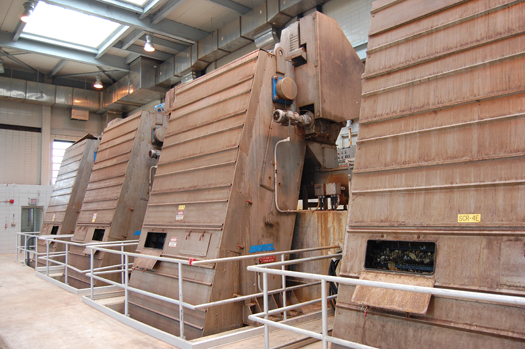
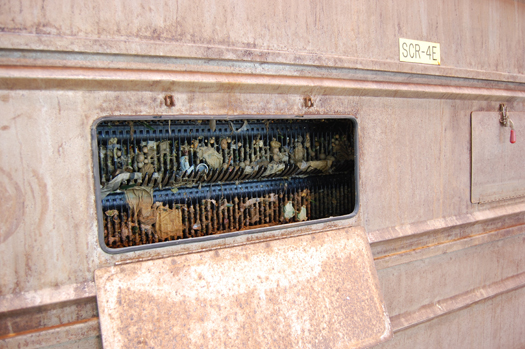
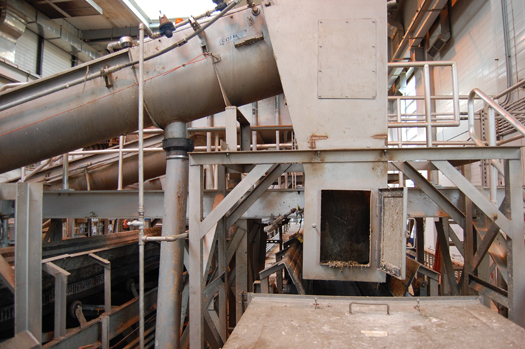
In the next room over, a series of massive electric pumps pull up influent from deep underground pipes to an elevation from which it is then gravity fed through the rest of screening, primary treatment, secondary processing, and nitrification / denitrification.
Blue Plains opened in 1935, and was originally designed to handle 120 million gallons per day (MGD). Today, it can pump up to 1000 MGD, and can process 370 MGD. This is sufficient processing capacity for treating water during all but the most dramatic flow events. However, the facility is occasionally overwhelmed, and has to pump water straight through to the Potomac untreated. To fix this problem, DC Water is implementing the “Long Term Control Plan” — a $1.8bn storage system to be constructed over the next 20 years. It will be an incredibly large pipe — 11 miles long, approximately 20ft wide — running back up the Anacostia River and into DC. This pipe will hold overflow beyond what facility can treat during massive runoff events until system is back below capacity, permitting Blue Plains to avoid dumping sewage and untreated runoff into river. It is expected to eliminate 97% of untreated waste overflow issues.

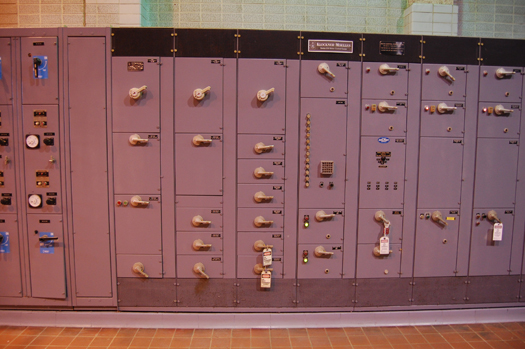
One of the air brakes between the screening/pumping building and the sand and grit removal building; the air brakes stop water from running backwards through a pump when it isn’t in operation.
‘everything, every 20 years’
(Our guide discussing replacement and maintenance of equipment, by which he means virtually every component other than the structural core of the buildings.)
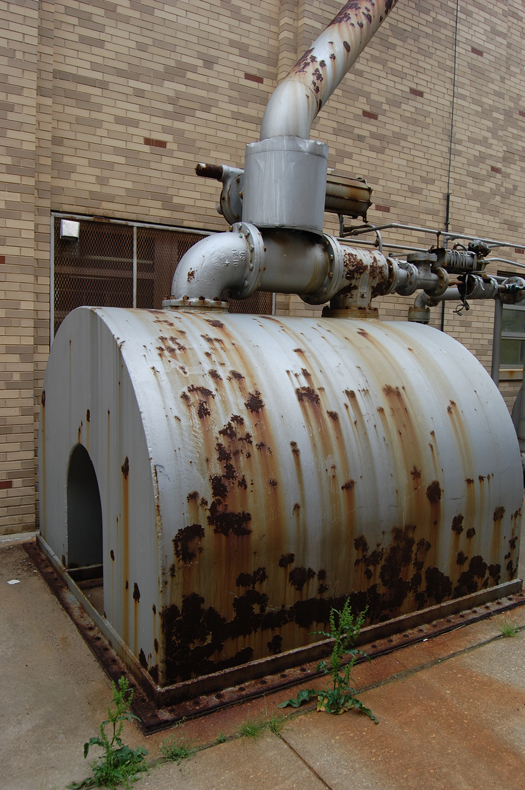
Adjacent to the screening process is the ‘aerated grit filtration room’ which removes sand, grit, eggshells, coffee grounds, and many other primarily inorganic particles by blasting air through the water to disturb these particles so they settle to the bottom, where some 8,000 tons are removed each year.
This room hosts a portion of what might be our favorite cycle that Blue Plains is plugged into, which might be called the Pothole Cycle. Because of the District’s combined sewer system (stormwater and wastewater use the same set of pipes), all of D.C.’s potholes — or, more specifically, the materials washed out of them — go here. As roads and highways break down, their aggregate erodes, enters the sewer system, and is eventually carried in stormwater to this room. Here, that aggregate is collected from the stormwater, sold to manufacturers of asphalt and concrete, and re-distributed — perhaps even used to patch the very holes created by that aggregate’s erosion.
This room smells terrible, and utilizes an astonishing amount of airflow to keep smells down (you barely notice it outside of the building). Massive air turnover is the most effective way to minimize the nasty scents that are associated with facilities like Blue Plains and, consequently, perhaps the most significant energy use at the facility has to do with blowing air instead of pumping water.

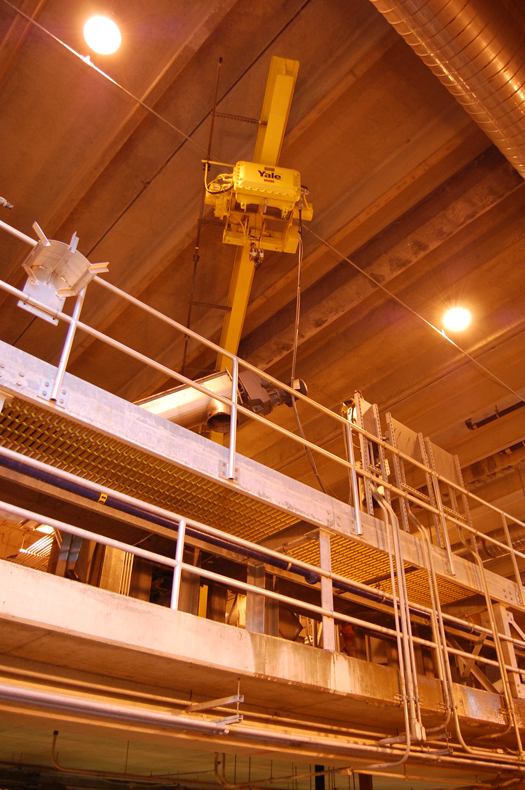
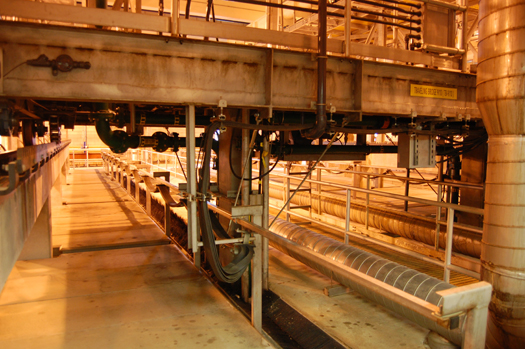
primary treatment sedimentation tanks
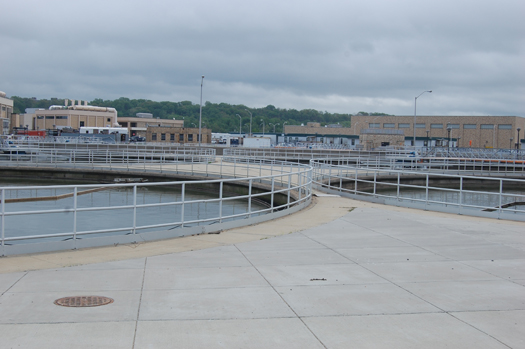
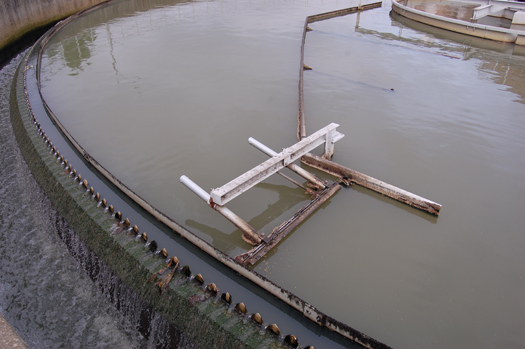

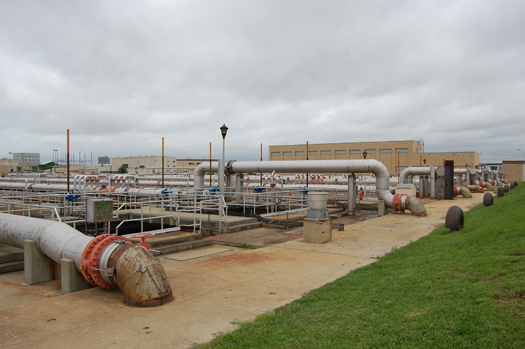

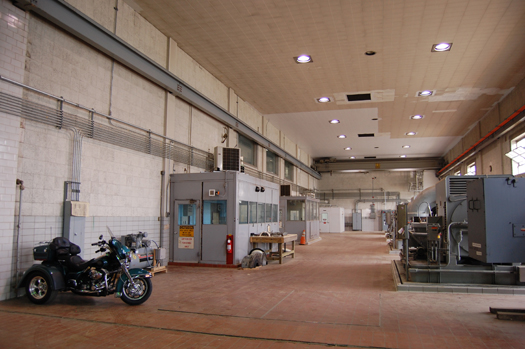
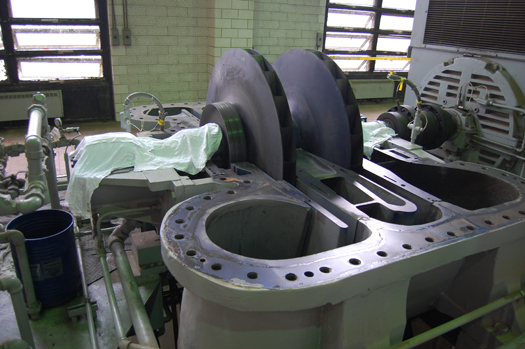

secondary treatment sedimentation Tanks
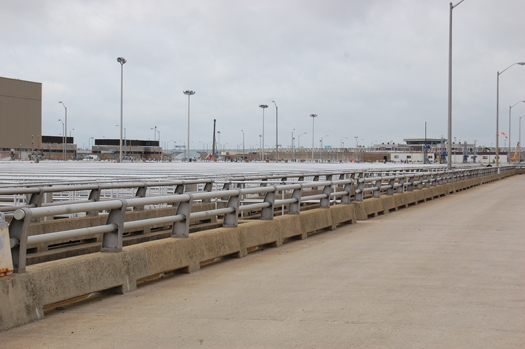
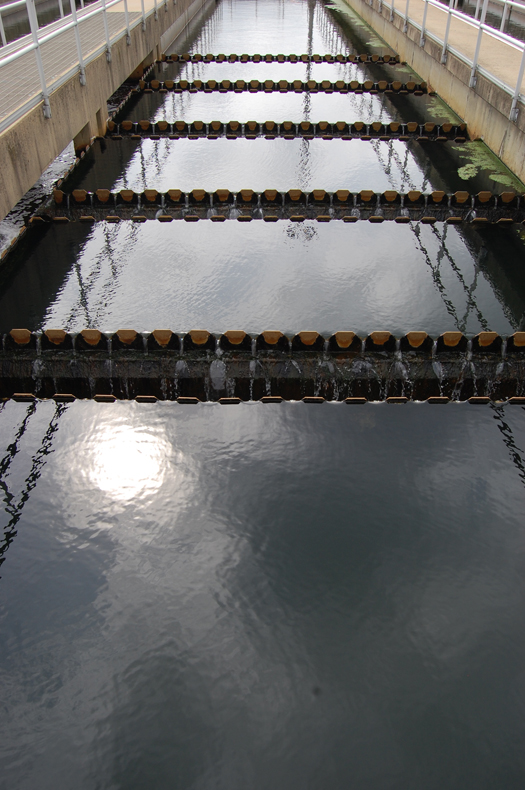

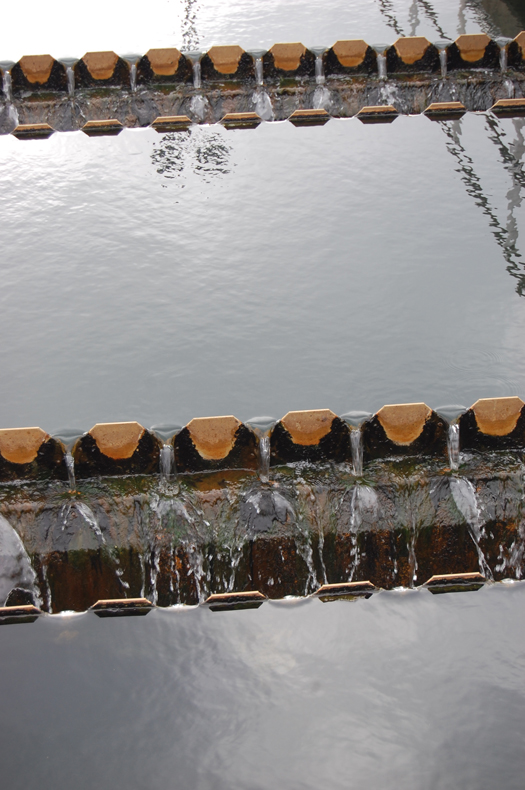
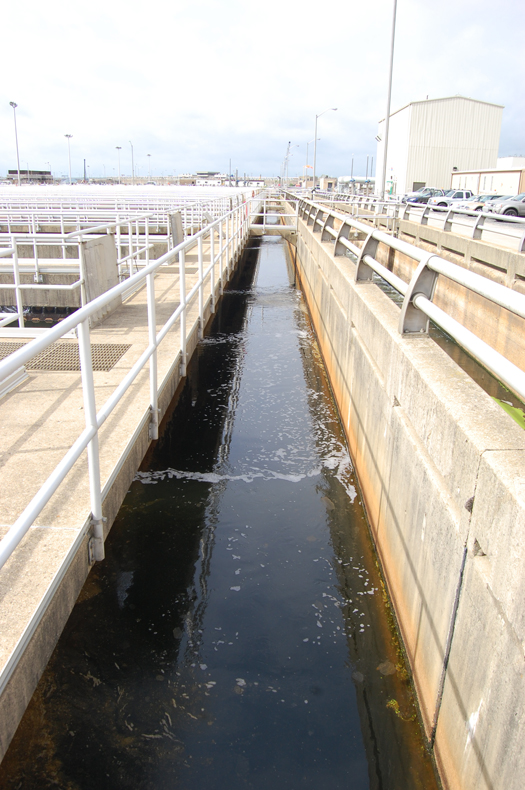
nitrification/denitrification
“Nitrification, denitrification, and filtration processes establish Blue Plains as an advanced wastewater treatment facility.
In secondary treatment, nitrogen in the organic material is converted to ammonia, a compound of nitrogen and hydrogen. The nitrification process converts ammonia in wastewater to nitrates. While ammonia in high concentrations can be toxic to some aquatic species, nitrogen in the form of nitrates is not toxic, but is algae food and can lead to algae blooms, depriving aquatic life of oxygen. Denitrification is the process of converting nitrate into harmless nitrogen gas.” [From DC Water literature on Blue Plains.]
Click to enlarge, and get a sense of how deep the empty tanks near the middle of the image are.
“Denitrification requires the absence of dissolved oxygen. This forces the microbes to consume the oxygen in nitrates for respiration and release nitrogen gas into the air. This process is acheived in the same tank as nitrification, but the nitrification process is aerated (aerobic), while the denitrification section is un-aerated (anoxic).” [From DC Water literature on Blue Plains.]
aerobic = nitrification –>
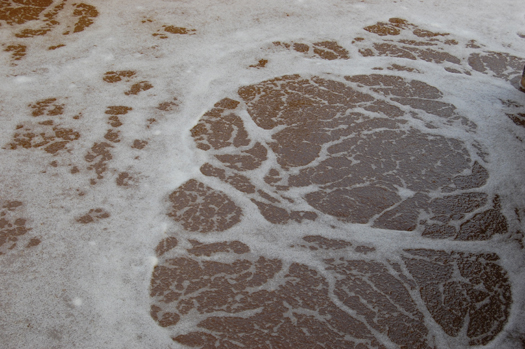
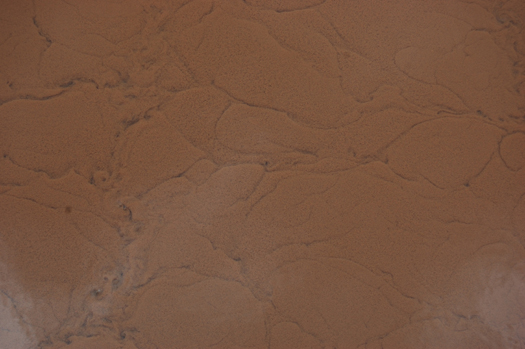

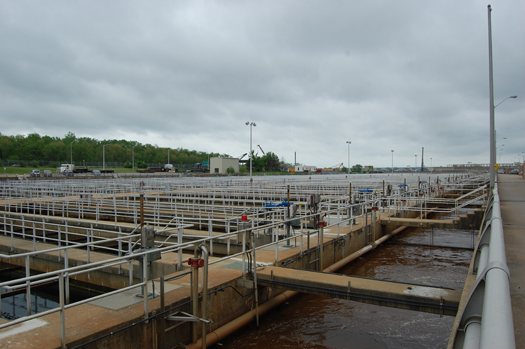
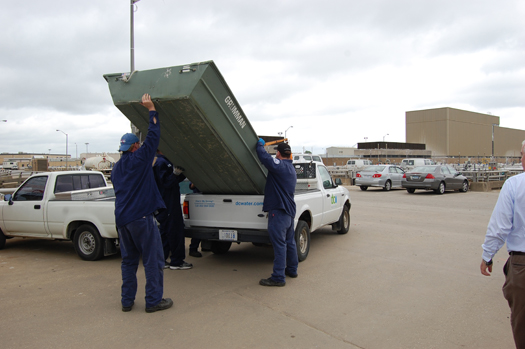

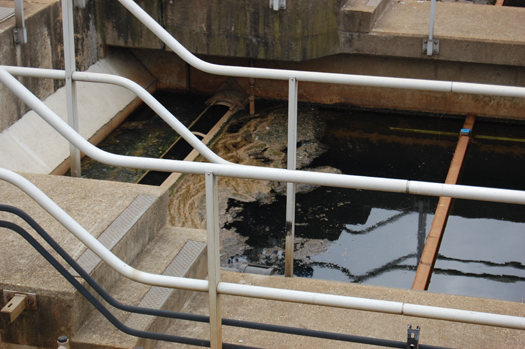

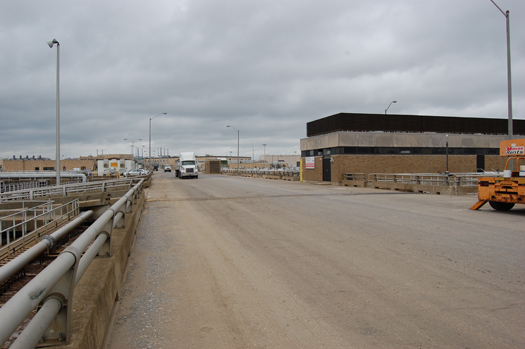
secondary treatment reactors, secondary sedimentation, nitrification / denitrification reactors and sedimentation
final filtration and chlorination
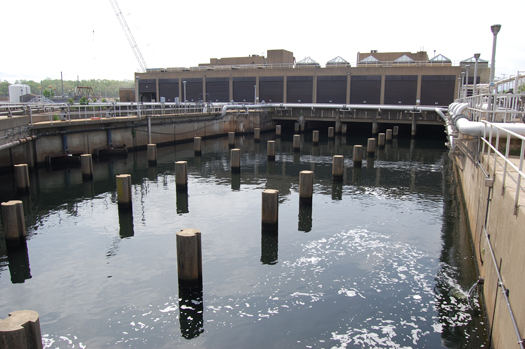
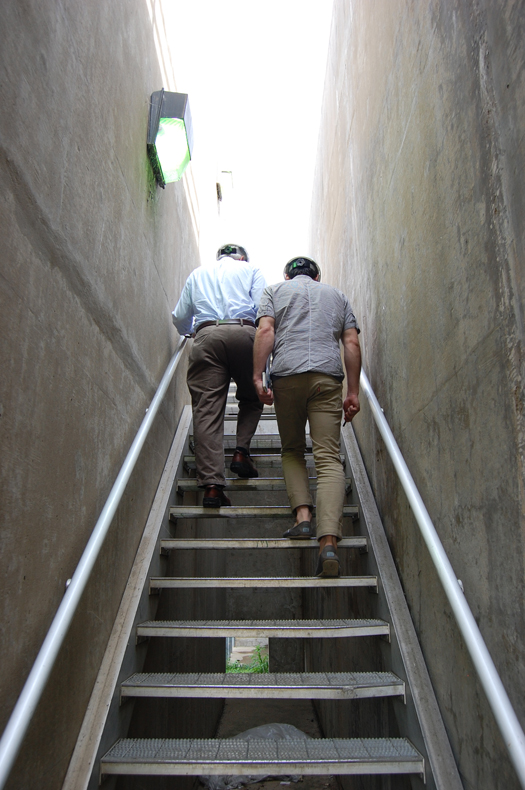
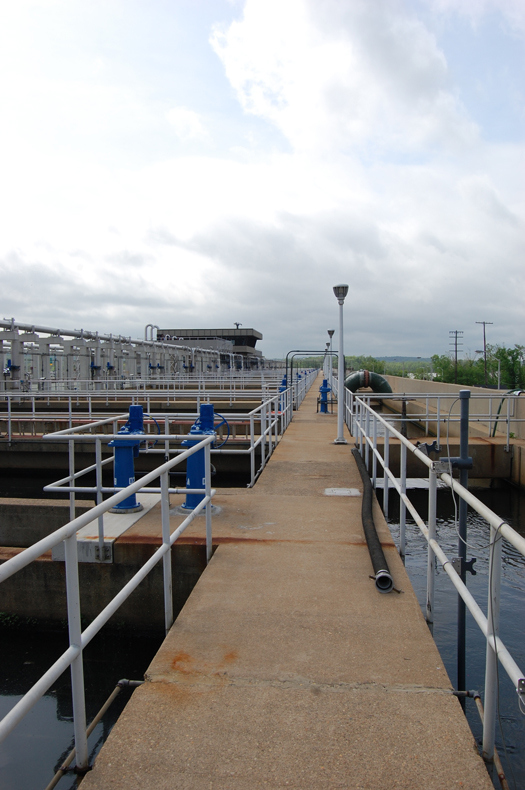
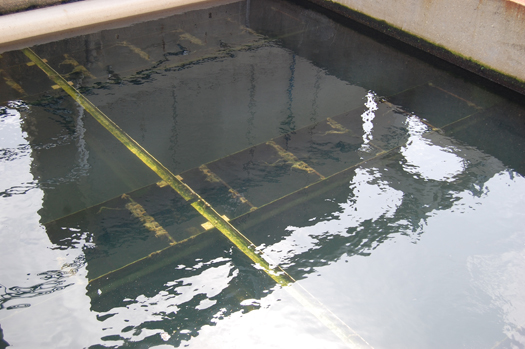
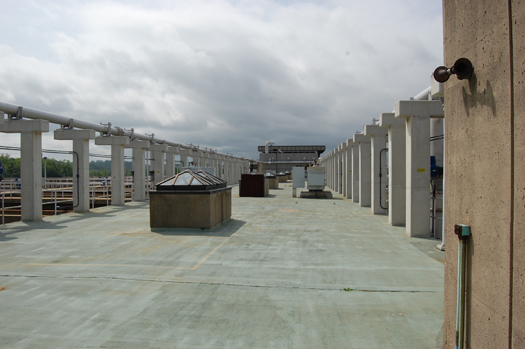
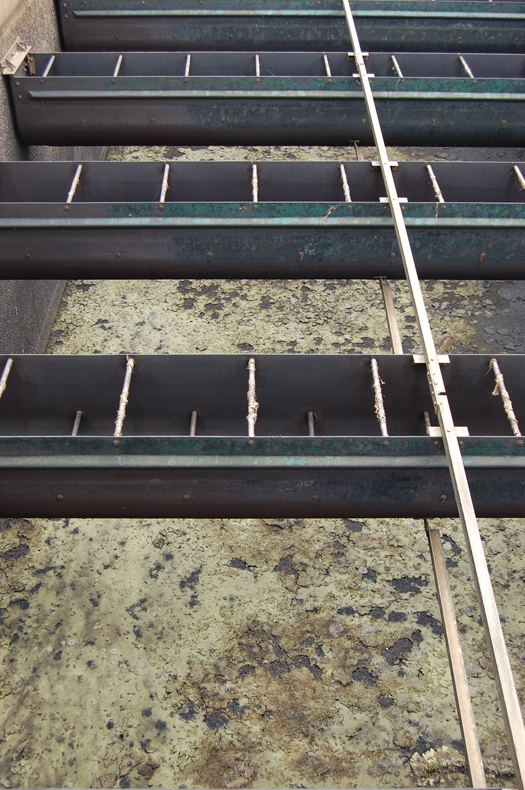
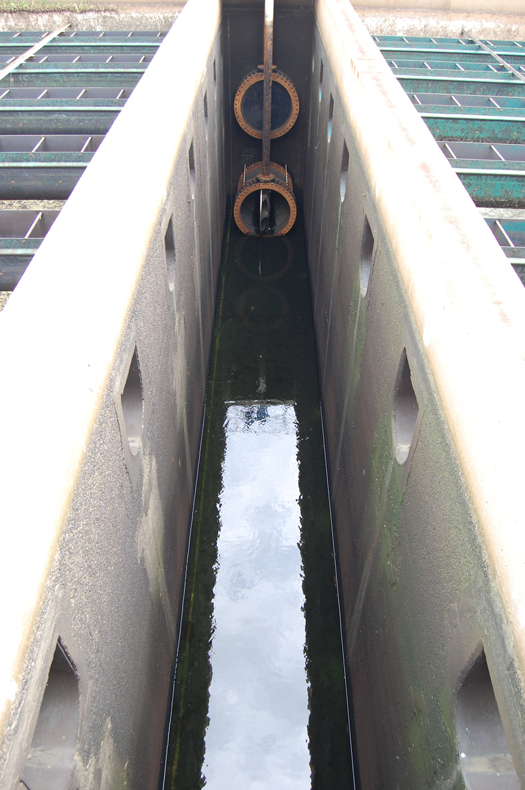
discharge
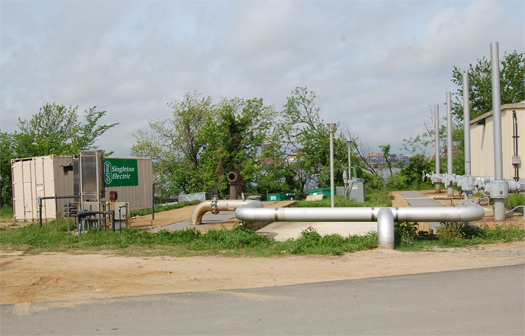
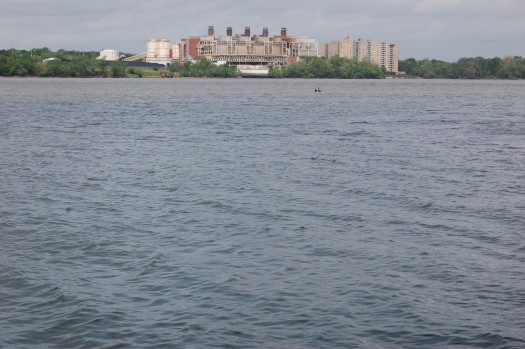
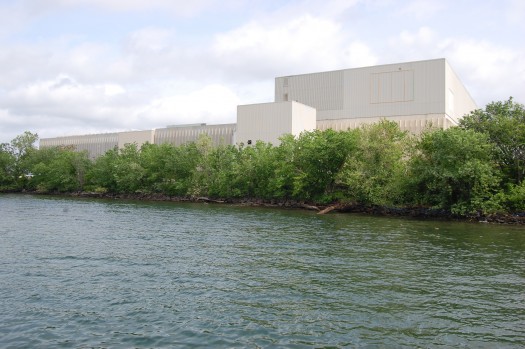
MAKING SOLIDS MORE SOLID
gravity sludge thickeners
At every step of influent treatment (except chlorination), solids are removed in the form of a soupy sludge or scum, and diverted to the process we will now follow. It has two key goals.
First, remove as much water as possible: water is heavy, and whether the solids removed from influent are waste or reusable, that extra weight makes transporting them to their next destination more difficult and more expensive. Sludge begins this process at between 1% – 4.5% solid, which is about the consistency of chocolate milk, or a very soupy hummus. By the end of the process, it will be at about 30% solid — similar to a thick chocolate cake batter.
Second, separate waste elements (floatable solids like fat, grease and oils, as well as residual grit) from valuable elements which will be turned into boisolids returned to beneficial use in surrounding communities. This separation happens almost immediately after the primary treatment stage in the liquids process — sludge is passed through influent screens which strain any remaining grit, and scum skimmed from the surface of the tanks is thickened in a ‘rotating drum scum screen’ before it is loaded, along with the grit, into trucks which haul them to a landfill. The remainder of our tour is about the thickening of sludge into biosolids.
Gravity sludge thickeners are the first step. After grit screening, primary sludge is diverted here for thickening before they are mixed with other thickened solids (removed later in the liquid process) in the centrifuges for final dewatering.
dissolved air flotation tanks and centrifuge room
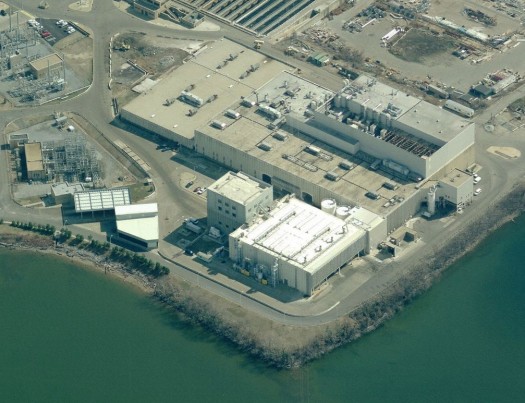
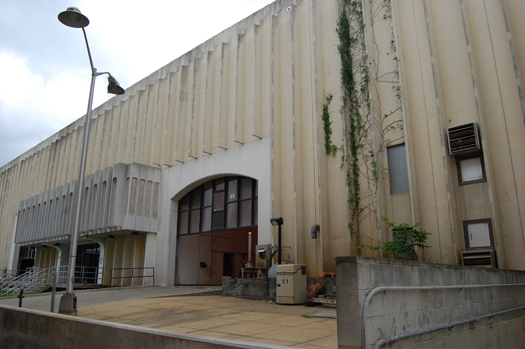
“Biological sludges and scum from the secondary and nitrification processes are directed to dissolved air flotation tanks, where the sludge stream is mixed with recycled water that is supersaturated with air under pressure. The mixture is released into the flotation tank where the supersaturated air forms micro bubbles that attach to the biomass and float it. The flotation-thickened sludge is then skimmed off the surface.” [From DC Water literature on Blue Plains.]
The skimmers move across the surface of the mixture on an armature similar to the wheel tracks of a tank. This is toward the front of the tank…




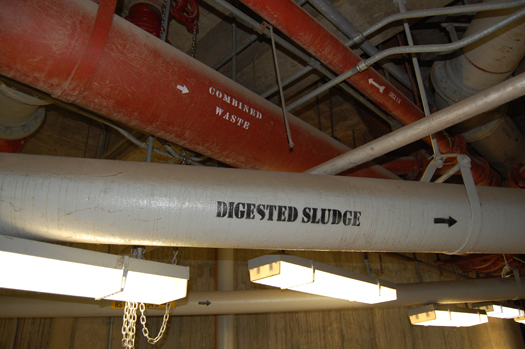

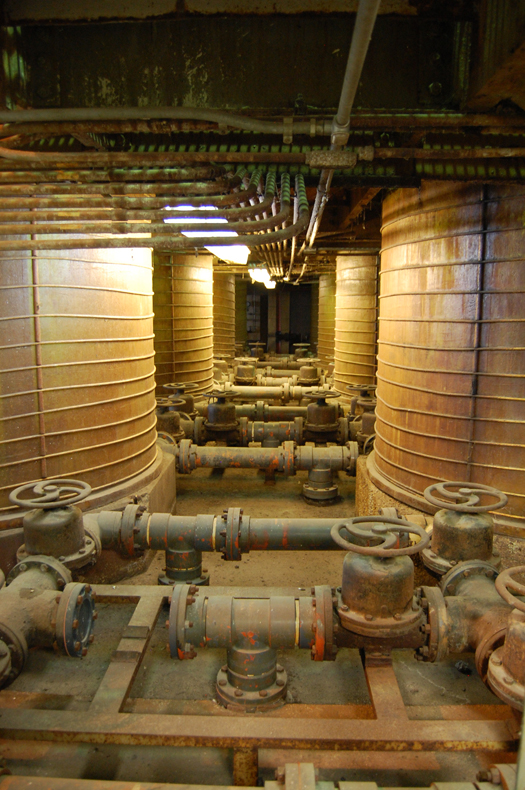
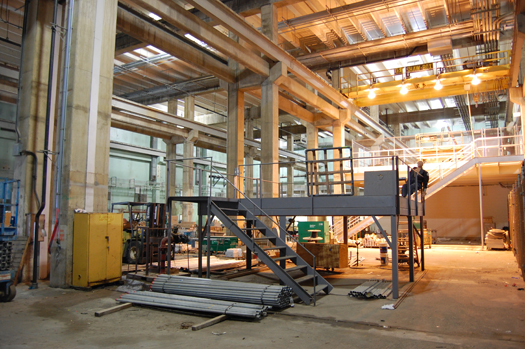
A recent improvement at the facility was switching from a vacuum tube dewatering process (which only produced a 23% solid substance) to these centrifuges.
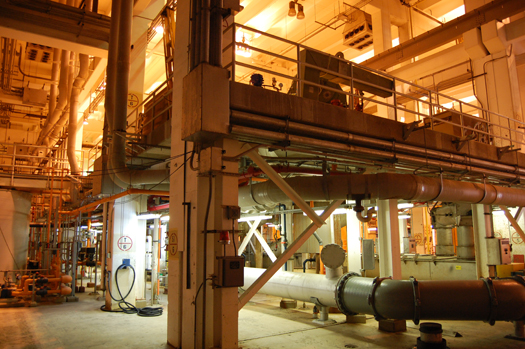
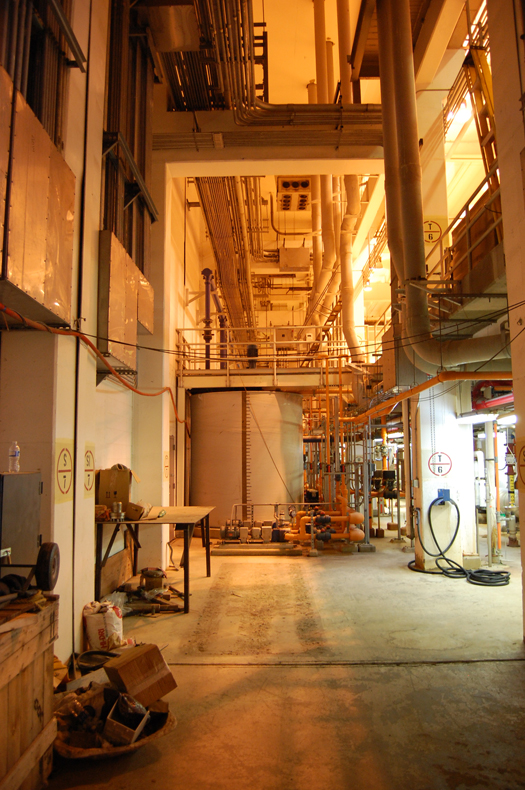

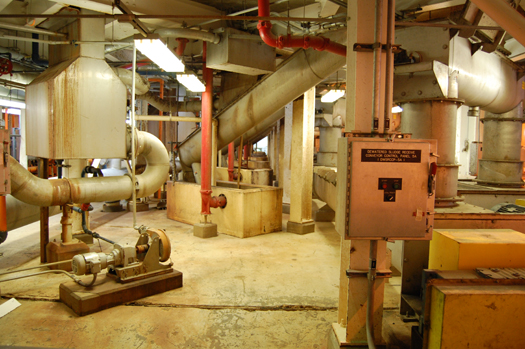



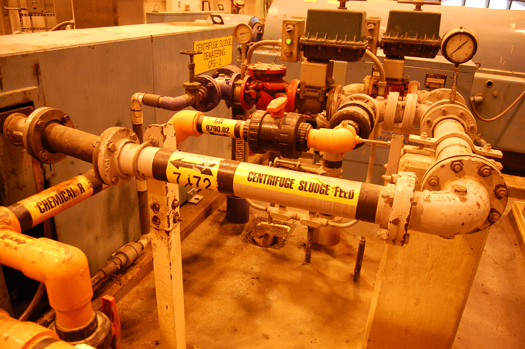
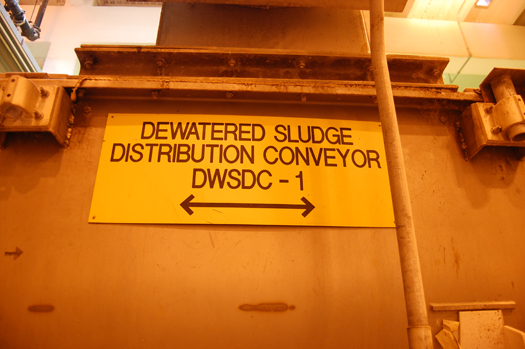



biosolids storage silo and loading
A challenge for the Blue Plains Biosolids program is ‘fecal fear.’ Blue Plains produces what are known as ‘Class B’ biosolids, which can only be used in agricultural applications that don’t directly produce food for humans – for example, they can’t be used to grow tomatos, but can be used to grow feed for cattle. The distribution of Class B biosolids is tightly controlled and monitored.
Blue Plains is planning the installation of cylindrical digesters, which will reduce the overall amount of biosolids (reducing trucking cost), improve the quality of biosolids to Class A, which can be used in farming processes that create food for humans, and produce methane, which can be used to generate around 50% of plants power need.
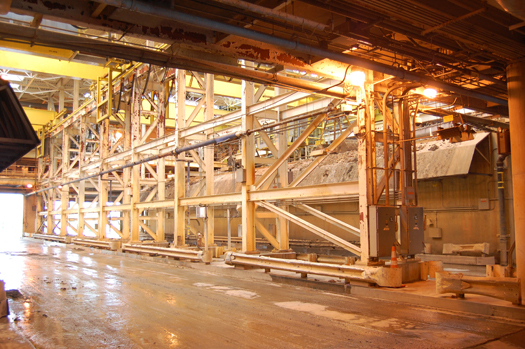
1,200 tons of biosolids per day (about 50-60 truckloads).
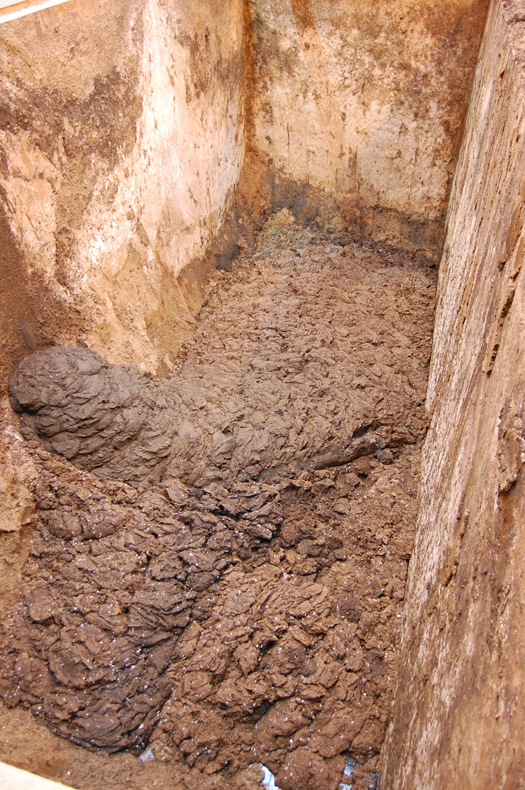
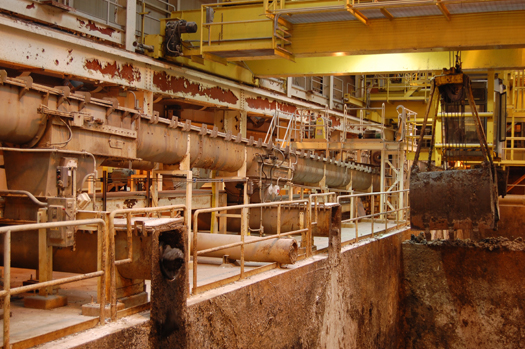
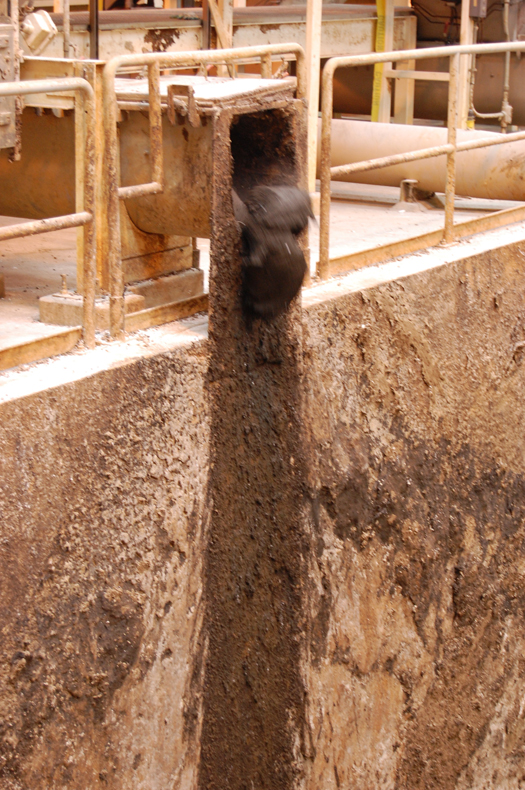
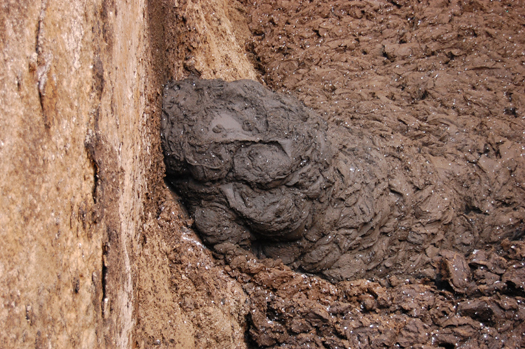
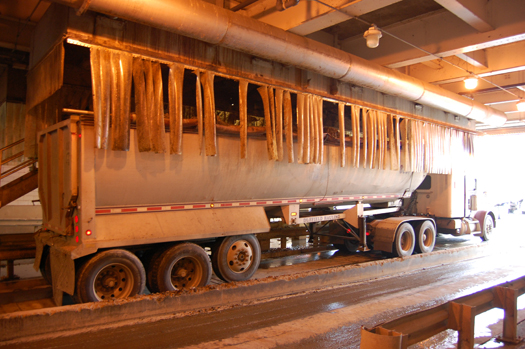


control center and electrical substation
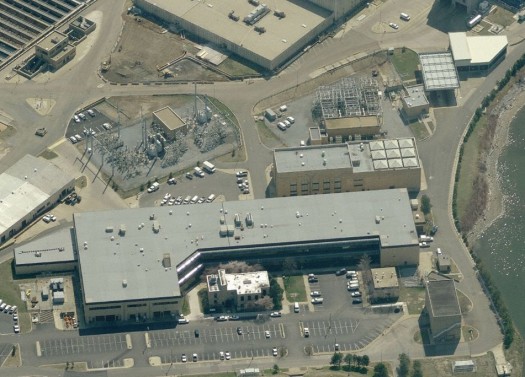
Some years ago, a massive power outage was caused by truck transporting lime (we’ll learn about lime soon) which lost control of its load and coated the facilities electrical substation in the fine caustic powder, knocking it out for 18 hours — and bringing down a quarter of DC’s electricity with it.
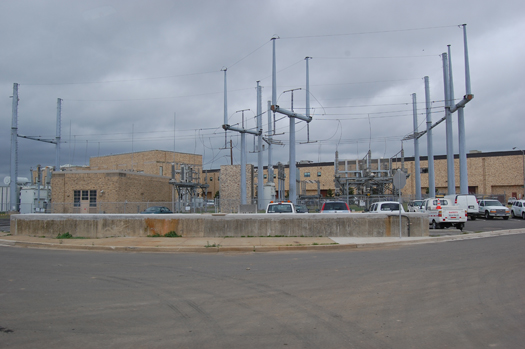
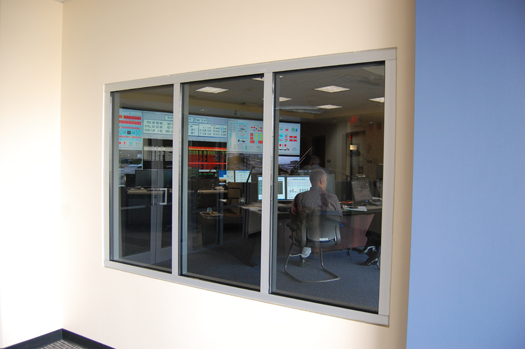
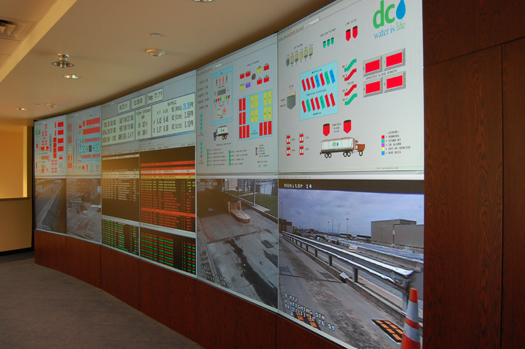
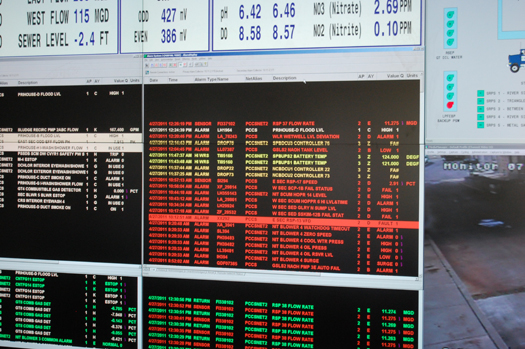
[This concludes our tour of Blue Plains. We would like to extend our sincere thanks to the fine people at Blue Plains for generously taking their time to show us around and answer all our questions.
In our experience, it isn’t uncommon to be able to tour infrastructural facilities like this. We strongly encourage it, and hope to read dispatches from our infrastructural present by folks across the country.]

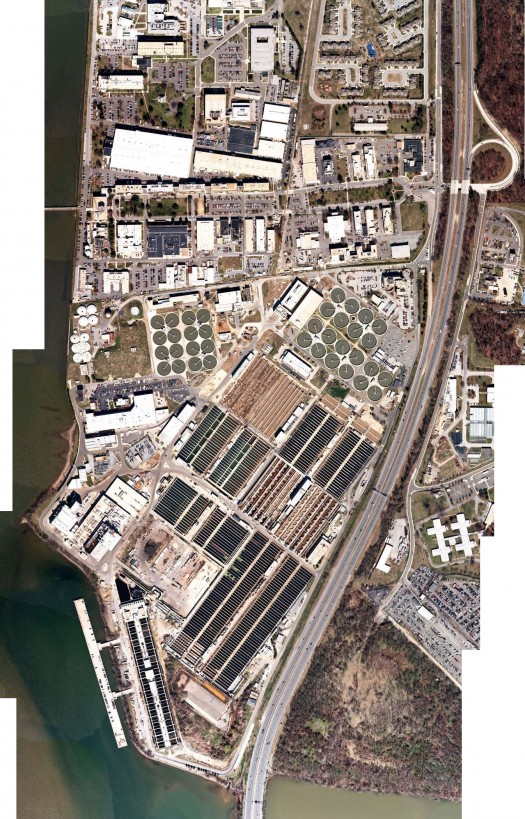
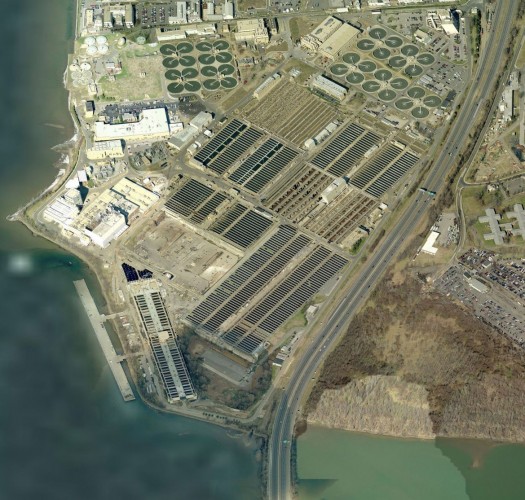

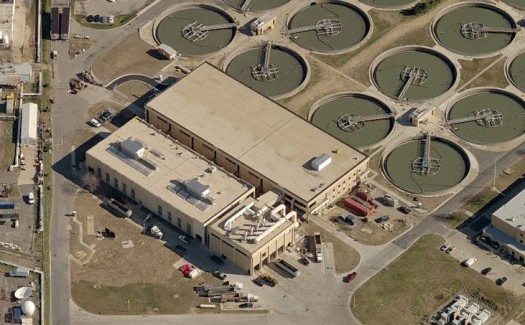
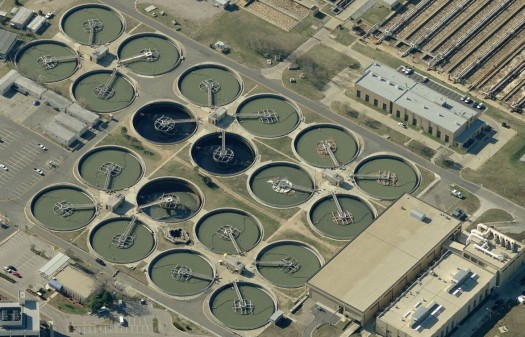
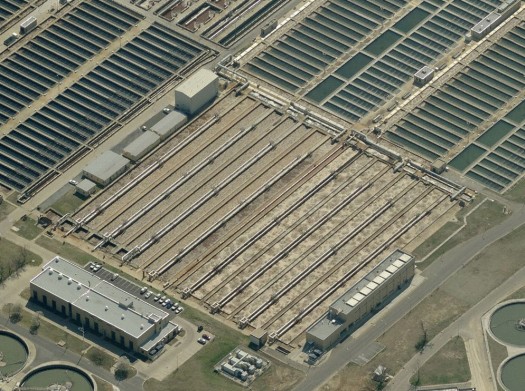
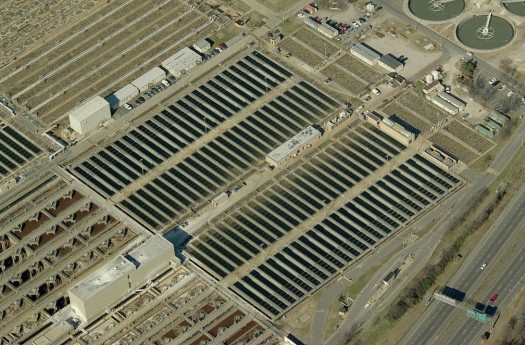
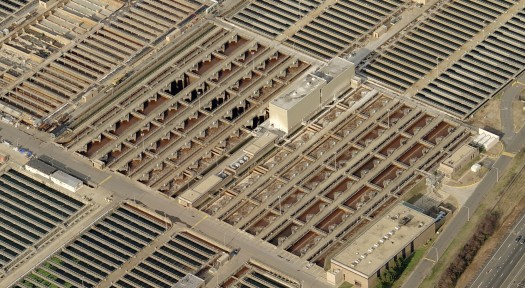
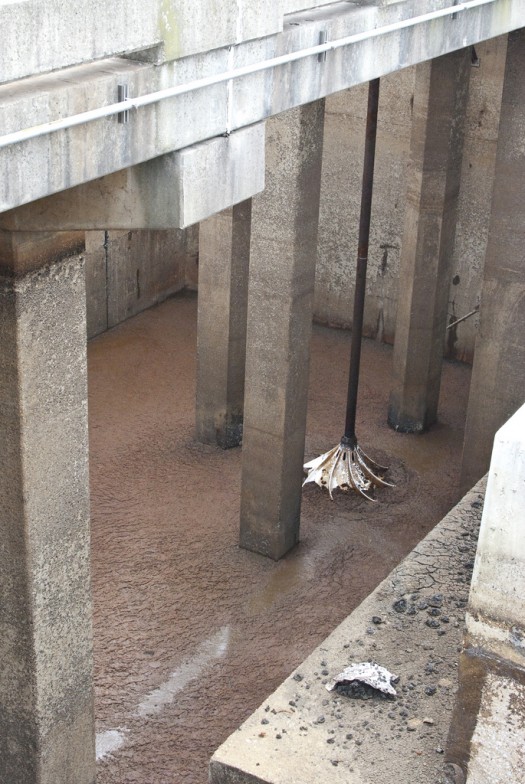
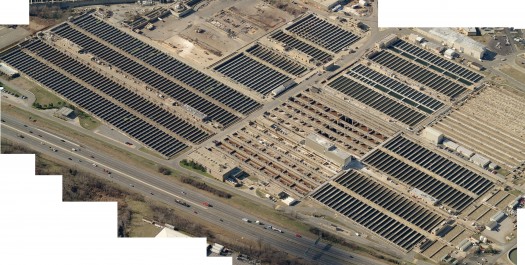

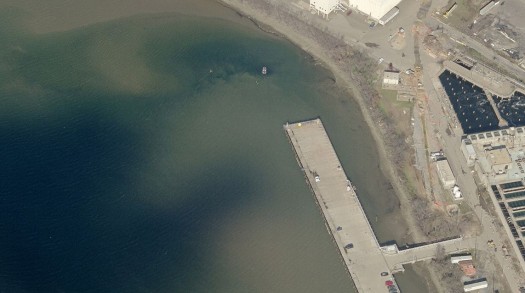
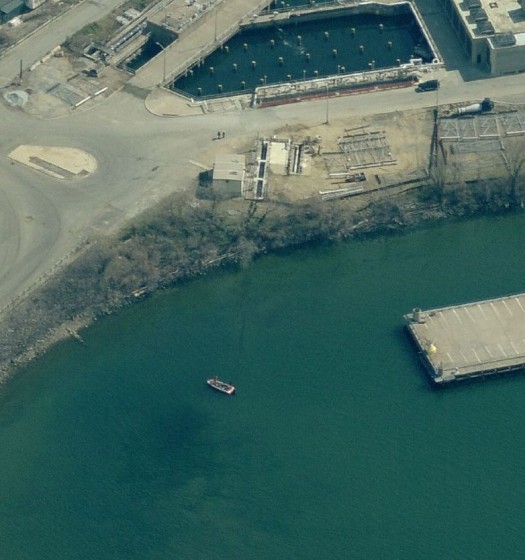
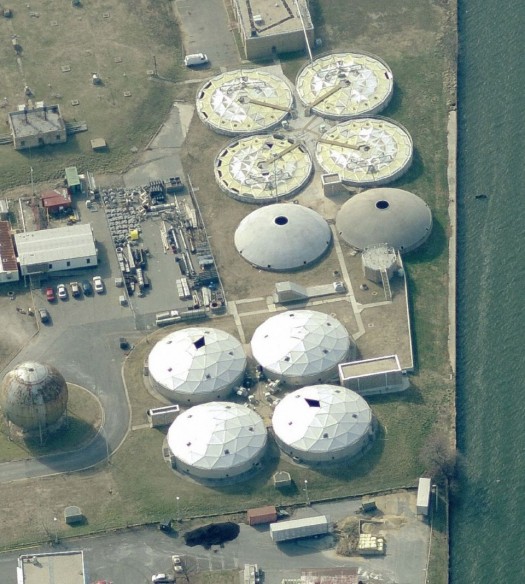
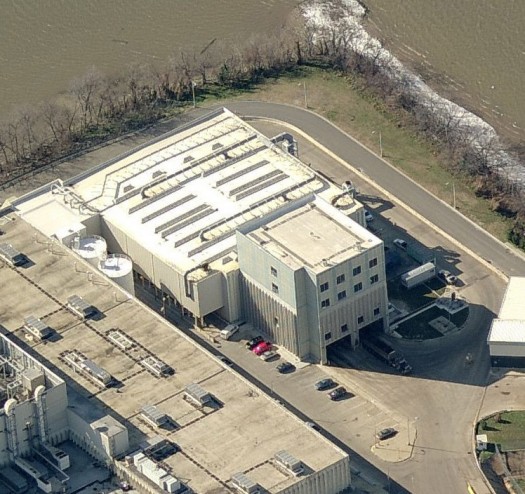
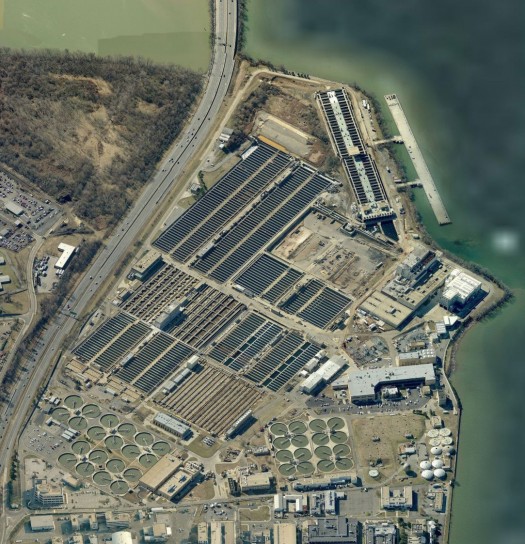

This has to be one of my favorite mammoth posts. I was especially fond on the comparisons of the sludge consistency to food, specifically hummus, which I was eating at the time.
The smell must have been fascinating!
About five years ago, I was working part-time on a small, mostly-organic farm in western Mass. I say “mostly-organic” as the farmer spread nitrate fertilizer on his fields. It emerged that he’d been scared off the fully-organic option, processed human waste, after some of his friends had their fields poisoned by heavy metals that hadn’t been properly separated out.
I read through this post after a morning spent motorcycling through the Manawatu in NZ – bucolic farming country and home to one of the most polluted rivers in the West. It’s being poisoned by a mix of semi-treated sewage and agricultural runoff (cowshit plus the fertilizers needed to maintain the productivity of NZ’s relatively thin topsoil).
Two things there, I think. The first is that a quite large amount of labyrinthine infrastructure, built more to a Lovecraftian scale than a human or natural one, is needed to maintain any riparian ecosystem in regular contact with human activity. The second is more specific to NZ: this is a land where landscape infrastructure has been carried out on a massive scale, but largely through biological processes and the introduction of new organisms. With frequent perverse consequences.
I like to combine the two things, which gives you:
“Labyrinthine landscape infrastructure built to a Lovecraftian scale, carried out through biological processes and the introduction of new organisms, with frequently perverse consequences.”
Brilliant.
(And, yes, the smell is fascinating — surprisingly diverse, and never quite as awful as I expected.)
I second that sentence.
I also love that sentence.
[…] this response as an opportunity to consider why we are so drawn to infrastructural landscapes like Blue Plains — not just as sites of logistical and technological operations, but aesthetically as well: […]
[…] an incredibly in-depth tour of the facility (without the smell), check out this mammoth post from September, showing the entire process in excruciating detail. Mammoth notes the fundamental […]